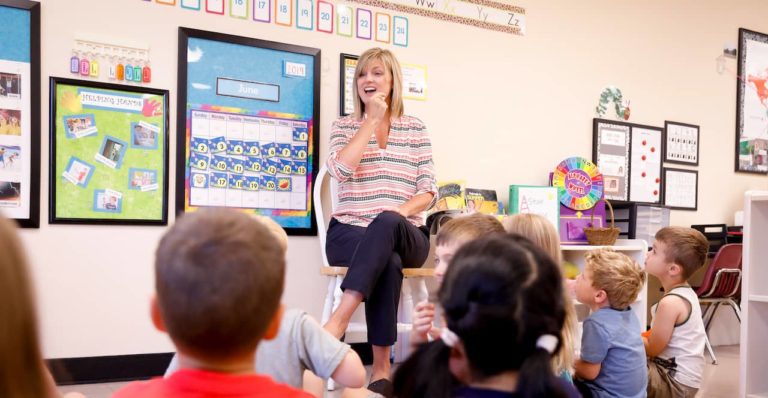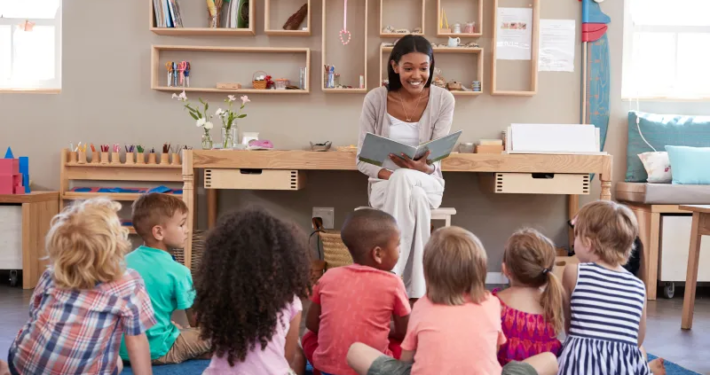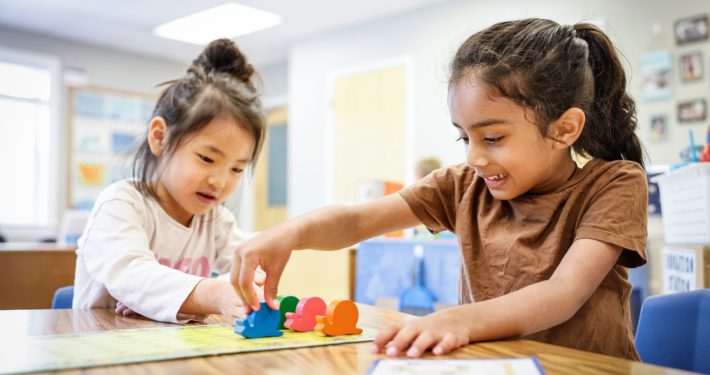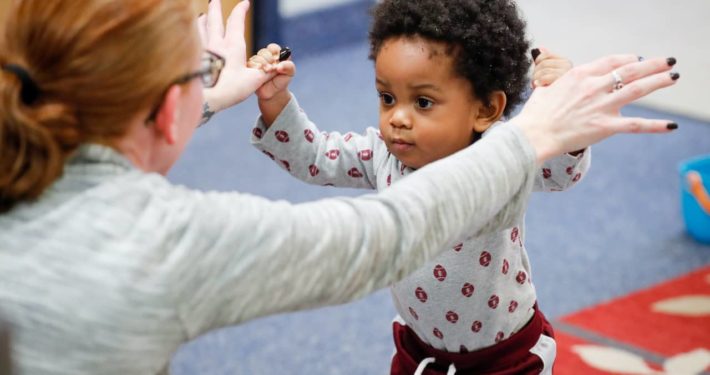As a parent, you may find yourself in the difficult position of having to terminate daycare services. It is never an easy decision to make, but you can make the process easier by writing a clear and concise termination letter. This letter can include the reasons for your decision, as well as any information about your child’s care that you want the daycare provider to know.
Leaving a childcare provider is never easy. But sometimes change is necessary: you move to a new city, your family’s schedule shifts, your child’s needs change, or your childcare center closes unexpectedly.
This article will help you draft a well-worded letter that will ensure a smooth transition for both you and the school. By following these tips, you can ensure that your letter is professional and respectful. This guide also brings together everything you need to navigate the transition smoothly—sample daycare withdrawal letters, step-by-step guide, and expert insights to help both you and your child move forward with confidence.
Recognizing When It’s Time to Move On
The decision to leave your child’s childcare center or preschool rarely happens overnight. You may start noticing small signs: your child seems less excited to go. Communication with teachers feels strained, or the center no longer fits your schedule.
Sometimes the change is practical—like a family move—or emotional, such as wanting a smaller environment or a preschool program that aligns better with your child’s stage of learning. Trust your instincts. When something doesn’t feel quite right, it’s okay to explore alternatives.
“Parents know when it’s time,” one experienced director shared. “And we hope families will come to us long before it ever feels that way. If something doesn’t seem right, we want to hear it so we can work together to support your child in the way they deserve. When home and school communicate openly, children thrive.”
How to Tell the Daycare That You Are Leaving
If you’re contemplating leaving your daycare provider, here are some of the steps you should take to ensure everything goes smoothly.
Talk to the daycare administrator or director.
You will need to speak with the daycare administrator. Keeping the conversation positive and honest is key in this situation. This meeting should be a productive working session that provides information about how best to care for your child and manage the transition process. It is important to be respectful and professional, but also remember that you are the customer.
Keep it quiet and private.
Try not to let any rumors get started. Having a private conversation with the daycare administrator will help ensure that no one else knows you’re thinking of leaving until you are ready to share your decision.
Ensure that the conversation stays positive.
This is a personal decision and you should be able to speak about it without being judged. The daycare administrator may have different opinions, but it is important that your final decision will not impact their opinion of you as a parent or how they treat you. In the end, this conversation should provide information on how best to care for your child and manage the transition process.
Be honest about your reasons.
It is up to you how much information you choose to share about why you are looking for another provider. Do not be afraid to be honest with the administrator about your reasons why you are leaving their care. This will be able to help them understand your concerns and allow them to address any issues that may have contributed to your decision.
At Cadence, our directors genuinely value the school-home connection and want to understand what families are experiencing—especially when challenges arise.
Many times, concerns are not about dissatisfaction with the school as a whole, but rather something specific that may be affecting your child’s comfort, routine, or learning. When directors are made aware of these situations, they are often able to respond quickly with changes, additional support, or new strategies so that leaving does not have to be the only option.
If you are on the fence about withdrawing and safety is not a factor, it may be worth giving the school time to respond to your feedback before making a final decision. Change can be disruptive for children and families, so if adjustments can be made to better support your child, everyone benefits. You should always feel empowered to advocate for your child, and open communication can sometimes lead to a much smoother path forward.
Understand the rules and requirements to ensure a smooth exit.
Understand how many days notice you must give to end daycare services. You will also want to know if there is a charge for early termination. It is important that you feel comfortable with your decision and know what you’ll be expected to do before pulling your child from the daycare.
How To Write a Daycare Withdrawal Letter
When you announce your decision to leave, be sure to provide a written letter for the daycare administrator. This will help ensure that they have all of the necessary information and that the transition goes as smoothly as possible for everyone involved.
What Should You Include in Your Daycare Termination Letter?
A well-written termination letter may contain the following information:
- The date of termination. This can be written as an exact date or as “X days from today.”
- The date the daycare will receive this notice. This should include today’s date as well as the date your letter is being sent out.
- A brief statement about how long your child was under care by the daycare service provider before ending services.
- A brief explanation for why you are leaving daycare services. In the event that your child will be transitioning to a new daycare, this can simply state something like “I plan to enroll my son in the local school system” or “My daughter has been accepted into preschool.”
If you are not moving or changing schools but still ending daycare services, it’s best to be honest about your reasons for leaving so they understand what factors influenced your decision. This could include making improvements to your own home, looking for another provider with better hours, moving closer to work or school, etc.
End the letter with a polite reminder that the daycare provider is welcome to contact you with any further questions or concerns they may have.
Daycare Termination Letter Examples
Here is an example of how to write a termination letter:
Dear [Daycare Administrator],
I have been a customer of [Daycare] for [amount of time]. Unfortunately, I have decided to transition my child from your services because our family needs a provider that is located closer to our home. I will be ending daycare on [date].
If you need any additional information regarding the termination of my child’s care, please do not hesitate to contact me.
Sincerely,
Your Name
Here is another example of a daycare termination letter:
Dear [Daycare Administrator],
My child [Child’s Name] has been enrolled in your daycare center since [Year], but our family has made a decision to withdraw from your services effective [Date]. It was not an easy choice, but we felt this would be best as we are looking for a center that is closer to our home.
[Child’s Name] has had plenty of wonderful memories at your daycare. We will definitely cherish all the relationships made.
I would be happy to speak to you in person about this transition. Please let me know the best time to do so.
Sincerely,
Your Name
Step-by-Step Actions to Transition Daycares [with Resources]
1) Decide it’s time to move—then name your “why.”
Write down the reasons (schedule, commute, closure, caregiver change). This helps you choose the right next program.
2) Schedule a private conversation with the director.
Keep it respectful and solution-oriented. Share your plan, ask about required notice, last bill date, and what records they can provide (progress notes, incident reports). This sets a positive tone for the final weeks.
3) Follow up with a written termination/withdrawal letter.
Include the date, your child’s name/class, final day, and a brief appreciative note. Clear, kind documentation prevents confusion and models professionalism.
4) Confirm the logistics in writing.
Ask for:
• Required notice window and any early-withdrawal fees
• How/when to pick up belongings and artwork
• Which records they’ll release and on what date (immunizations are typically required for re-enrollment elsewhere).
👉 CDC: Keep Your Child’s Vaccine Records Up to Date
5) Start your search with safety and quality signals in mind.
Check licensing status, recent inspection reports, and (where available) quality ratings (QRIS).
👉 ChildCare.gov: Regulated Child Care & Licensing
6) Tour more than one program—know what “quality” looks like.
On tours, look for warm teacher–child interactions, developmentally appropriate activities, and clear communication with families. Use trusted checklists and NAEYC’s family resources to guide your questions.
👉 NAEYC: What Does a High-Quality Preschool Program Look Like?
7) Ask specific questions
• “What’s your typical teacher-to-child ratio?”
👉 ChildCare.gov: Supervision Ratios and Group Sizes
- “How long have most teachers been here?”
👉 NAEYC: What Does a High-Quality Preschool Program Look Like? - “How do you handle transitions and separation at drop-off?”
👉 HealthyChildren.org: Preparing Your Child for Child Care
8) Gather and prep documents early.
Create a simple “enrollment packet”: immunization record (or exemption per state rules), emergency contacts, allergy/action plans, and any developmental notes your new teachers should know.
9) Prepare your child—keep it simple, early, and consistent.
Explain the change in warm, concrete terms; visit the new classroom (or do a quick video hello) so faces are familiar. Keep routines like bedtime, breakfast, and goodbye rituals the same—predictability builds comfort and confidence.
👉 Cadence Parent Partnership Webinar: Managing Big Transitions & Changes
10) Plan for your child’s first week.
If possible, bring a comfort item, and practice the same drop-off routine each morning. Gradual introductions and calm goodbyes help children adjust at their own pace.
👉 HealthyChildren.org: Preparing for the First Day of Child Care
11) Communicate early with the new teachers.
Share what comforts your child, nap preferences, and food sensitivities. Ask about daily updates (app, pickup notes, or chats) so you stay informed.
Daycare Transition Checklist
Transitions are easier when you plan ahead. Use this checklist to stay on track.
Two to Four Weeks Before Leaving
- Submit your daycare termination letter.
- Confirm your final payment and notice period.
- Notify your new daycare of your child’s start date.
One Week Before
- Collect personal items and records.
- Pack supplies for the new center.
- Talk to your child about what to expect.
Last Day
- Say goodbye to teachers and classmates.
- Thank staff for their care.
- Do something special with your child to celebrate this new chapter.
Finding a New Daycare Provider
Finding a new center can feel daunting, especially on a deadline. Start with a few priorities: safety, communication, and the feeling you get when you walk in.
READ MORE: How To Choose The Right Childcare For Your Child
When touring or talking with directors, ask questions like:
- What’s your teacher-to-child ratio?
- How long have your staff members been here?
- What curriculum or learning philosophy do you follow?
- How do you handle transitions for new children?
Cadence Education is a daycare and early education provider that understands the commitment and dedication of parents to both their jobs and their children. That is why we provide flexible hours, exceptional care for infants, toddlers, and preschoolers, and a flexible payment plan. We also have a vast network of childcare partners all over the U.S. so you will certainly find a partner that will provide for your needs wherever you are.
Our center focuses on creating a home-like environment where your child can thrive and succeed in a diverse, nurturing community. If you are interested in exploring our daycare options for your child, please feel free to contact us for a tour or more information.
How to Prepare Your Child for Switching Daycares
Explain the Change
Talk to your child early about the upcoming daycare transition in simple, reassuring language. Even if they’re not yet talking, they can still understand your tone and sense of calm. Framing the change as a positive new adventure helps them feel safe and included. If possible, let them say goodbye to their teachers and friends with a hug, wave, or small keepsake before their last day.
Keep Routines Consistent
Children adjust best when familiar routines stay the same. Keep consistent mealtimes, nap schedules, and drop-off rituals, and bring a few favorite items—like a blanket or stuffed animal—to the new daycare. These small comforts help your child feel secure and confident as they settle into their new environment.
Connect with the New Daycare
Visit or speak with your new daycare teachers in advance. Meeting them ahead of time allows your child to recognize friendly faces on the first day and helps you learn about daily routines or expectations that may differ. Knowing what’s ahead makes the transition smoother for both of you and sets your child up for success.
5 Qualities of a Great Daycare or Preschool Teacher
When searching for a new program, look for educators who are patient, empathetic, organized, and passionate about early learning.
When choosing the right program for your child, teachers make all the difference. Beyond training and experience, these standout qualities help create a classroom where children feel safe, supported, and excited to learn.
Commitment to Growth
Exceptional teachers never stop learning. They stay curious about new teaching methods and child development research—bringing fresh ideas and energy into their classrooms every day.
2. Empathy and Kindness
Little ones experience big emotions. An empathetic teacher listens, comforts, and helps children express their feelings safely and confidently. Above all, the best teachers lead with Their warmth and care help every child feel valued, secure, and ready to grow.
3. Organization
Structure creates security. Organized teachers keep routines clear and predictable so children know what to expect and can focus on learning through play.
4. Cultural Awareness
Inclusive classrooms celebrate every child’s background. Culturally aware teachers foster belonging and teach respect through everyday interactions.
5. Collaboration
Children thrive when they work and play together. Collaborative teachers encourage teamwork, helping kids develop empathy and early problem-solving skills
Final Thoughts
Change is never easy, especially when it involves your child’s care and happiness. But with honesty, preparation, and compassion, a daycare transition can be a positive step forward. It’s a chance to find a setting that fits your family’s next stage and helps your child continue to grow.





